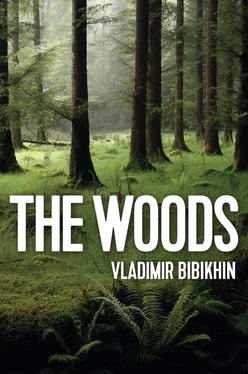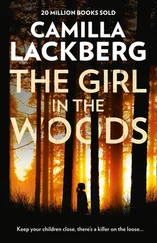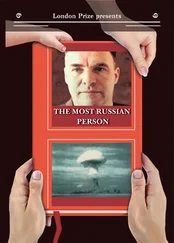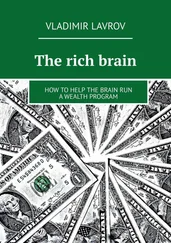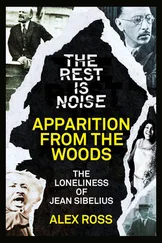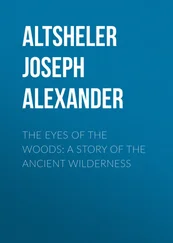Let us continue this brief excursion into the World Tree, a myth of primaeval humanity, and since we are not primaeval but have progressed, we can accordingly look down condescendingly on the forest and the World Tree. We note from the heights of our scientific understanding that there are two types of World Tree, one vertical, the other horizontal. Admittedly, the distinction is more for convenience of description and classification, and in the World Tree the horizontal and vertical are interwoven and merge. In Genesis, we find both trees: the Tree of Knowledge is vertical and enables contact with the gods, its sanctity impugned only by a taboo, a moral nuance optional in the mythology. What the Ophites, serpent-worshippers, did was simply to remove the moral veneer, the tinge of transgression, from the biblical story and restore the vertical tree to its eternal role of linking the earth below with the divine world above, of ascending to ultimate knowledge and wisdom, the knowledge of good and evil. The horizontal tree is the heavenly tree of life, the source of fertility. It, too, has a taboo attached: it may not be cut down if procreation and abundance are not to end. A fairly recent television interview with one of the few remaining primaeval sages indicated that for him Europeans, with all their pretensions, their manners and clothing, were no longer people of the forest; as far as he was concerned, they were the dead and the harbingers of death.
In Norse mythology, Yggdrasil (in old Norse, they said mimameidr), the giant rowan tree, sank its roots down into three worlds: Niflheim, the lower world of darkness; Jotunheim, the world of giants; and Asgard, the city of the Æsir gods. 2Similarly, there are three keys by the roots of the World Rowan Tree: Urðarbrunnr is the key of prediction; Mimisbrunnr is the key of wisdom; and Hvergelmir is the key of passion. The Boiling Cauldron is where a monster, Níðhöggr, resides which is engaged in gnawing at a root of the World Tree. Applying our basic classification, this is, of course, a vertical tree. As in the Bible, there are the Norns, who live by Yggdrasil near Urðarbrunnr, and they are associated with good and evil. As in Socrates, they assist at childbirth.
When the world comes to an end with Ragnarök, the gods, too, may die, as in Wagner’s Götterdämmerung, but the World Tree, the tree of the cosmos, although damaged, will remain and will give birth to two beings, Líf (life) and Lífþrasir (lover of life), from whom humankind will be reborn. The tree is more enduring than the gods. As in the Ophite reading of the Bible, God creates only the horizontal tree of matter, while the vertical tree that hints at limits of the divine is not and could not be revealed by God.
Traditionally, the tree pierces and simultaneously links different tiers of life. In Siberian religions in the Altai Mountains, a tree is installed in the hole in the roof of the tent. It is beneath the roof in the human world, but above the roof in the cosmic and divine world; smoke from the stove inside, entwining the tree, rises to the upper tiers. The shaman himself then climbs the tree in the direction indicated by the smoke, ascending to the higher world up the World Tree. By doing so, he is of course also taking the risk of dying on the tree for humankind.
The shaman clings to the tree, merges with it, or, we might say, is crucified on it, because he is taking a terrible physical and spiritual risk. This cleaving of the shaman to the tree brings to mind the relationship of the Crucified to the wood of the Cross. The wood raises him and they become one. Rather than repudiate the Cross as an instrument of execution, Christ clings to and connects with it. This theme of merging, even of identification of Christ with the Cross, is evident in an unusual 1939 sculpture in elm by Ossip Zadkine. 3Born in 1890 in Smolensk, he died in Paris in 1967 and is best known for his 1951 sculpture The Destroyed City in Rotterdam, which depicts a broken human figure with arms outstretched in horror. Zadkine’s elm Christ appears to be convulsed, but his arms are like bare tree branches. This merging with the Cross is more evident in the earliest extant crucifixes, in which Christ does not have his eyes lowered in mortal anguish but is alive, with his eyes wide open. The Cross seems more the place where his divinity is made manifest, and he seems to be reaching out with his arms intentionally.
This corresponds to something about the Cross which is now almost overlooked and which Pavel Florensky (1882–1937) in his thinking about the divinity of the Cross needed to reconstruct: the wood of the Cross itself has features of divinity. 4It is life-giving. That is, the Cross itself is a tree, like the body of the god. The Cross was absolutely the most important of all the relics of Christianity as a result of the awareness of this fusion of the deity with his tree.
In the Cross, people see both trees, and often refer to its horizontal as representing the human world and the vertical as humanity standing before God, which is not apart from but rises above the horizontal. A variety of pious and pleasing interpretations are possible. Out of this range of interpretations, meditations, mythologems, and other kinds of mystical understanding, what matters for us, what we are reaching for, is just one thing: the Cross unexpectedly points in the same direction as Plato with his tetrahedron in place of the first element of matter, fire. The Cross is wood, it is the World Tree, and it is geometric. An easy and rather widespread notion is that the wood is matter and the Cross is form brought to and superimposed on matter. If we settle for that, we will have got one problem out of the way and can move expeditiously on to the next. The trouble is that, having adopted that approach, we can no less expeditiously deal with any other difficulty and will end up in the unenviable position of the cultural historian, a historian of thought whose sole mission is to ‘assimilate and present’ his or her material. Well, who cares anyway that, if we stubbornly refuse to acknowledge the dualism of matter and form, we will have to wave goodbye to all traditional history of philosophy and culture? Away with them! So we’ll be empty-handed. Sooner that than find ourselves with a museum on our hands and playing the part of museum attendants. We’re better off out in the open and empty-handed.
Well, actually, no. We are not going to make the obvious mistake of thinking that Plato chose one pole on the materialism–idealism spectrum and then made sure everything he said conformed to it. The materialism–idealism divide dates from long after Plato, and is a great deal shallower than his profundity. His conundrum that matter is pure geometry exactly reflects the mystery of the Cross. The Cross is not a philosophical construct, a primitive representation or abstraction of the World Tree: the Cross is the forest. It is not the Cross that needs to be explained in terms of the World Tree but, on the contrary, if we are to understand anything about the World Tree at all, the only possibility is by way of the Cross.
So, it will be better if we again mill around on the spot where we stumbled. The dark, primaeval forest, the later forest of the megapolises, tobacco, alcohol, and drugs, all liberate us from metric space. In the forest, you are disorientated. The forest is in the Cross just as pure geo-metry is in the tetrahedron. We find our way through by distinguishing number from number, ontological number from arithmetical number. It transpires that mathematics does not know what number is and surrenders it to philosophy. So much the better; that only makes things easier for us. It means we now have to construct a theory of number. The commonsense theory is clear: the generalizations derive from experience. We supposedly count our fingers, or sheep, then look away from our fingers, or the sheep, and arrive at pure numbers. Let us discard that out of hand as a piece of nonsense that can only trip us up. In the first place, before we can start counting fingers or sheep we need to standardize them: that is, they need to have been strong-armed into the realm of arithmetic. Abstract counting, then, was there first, before specific counting. Secondly, if counting were an abstraction from specific counting, where did the infinite set of natural numbers come from?
Читать дальше
